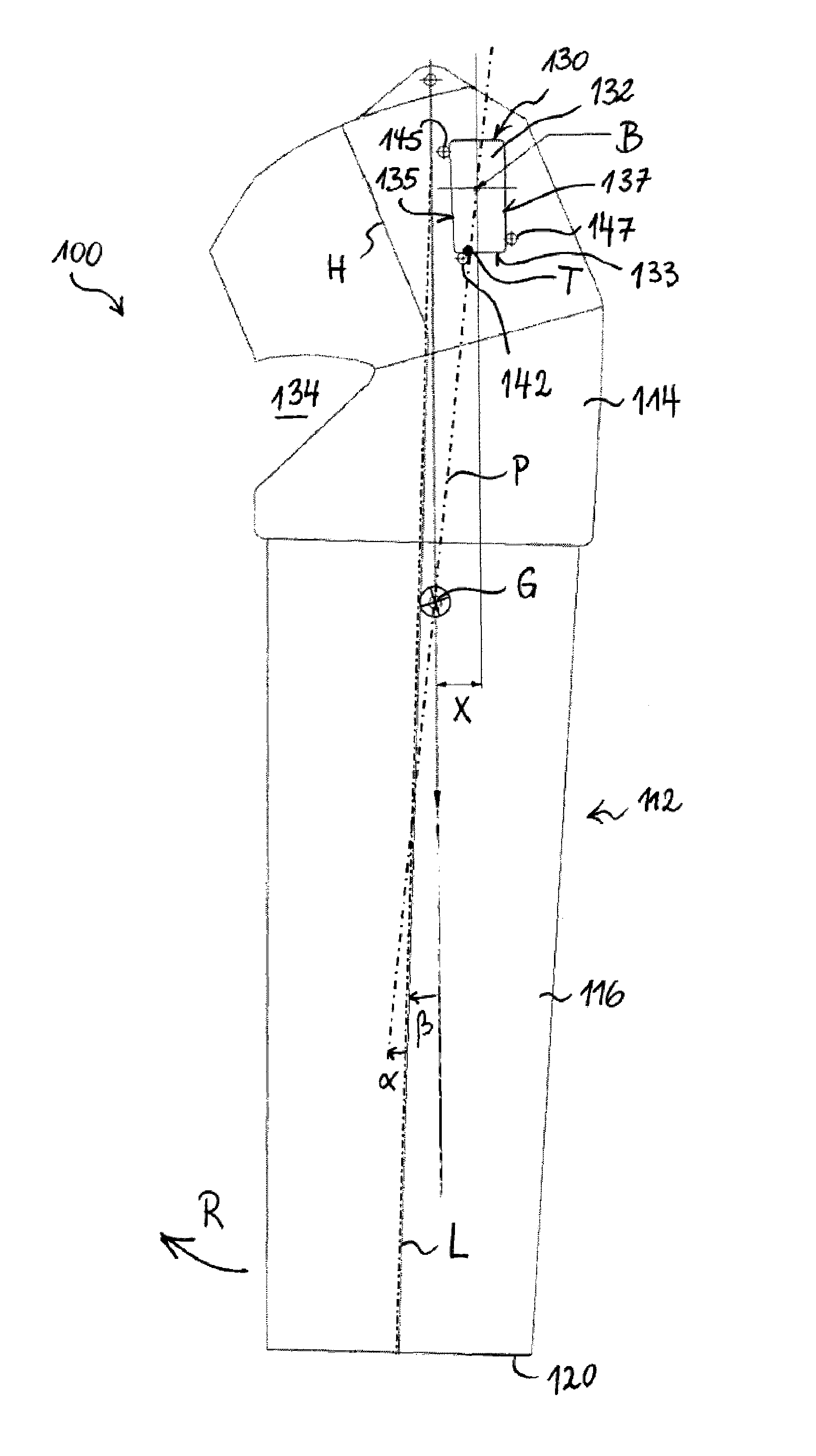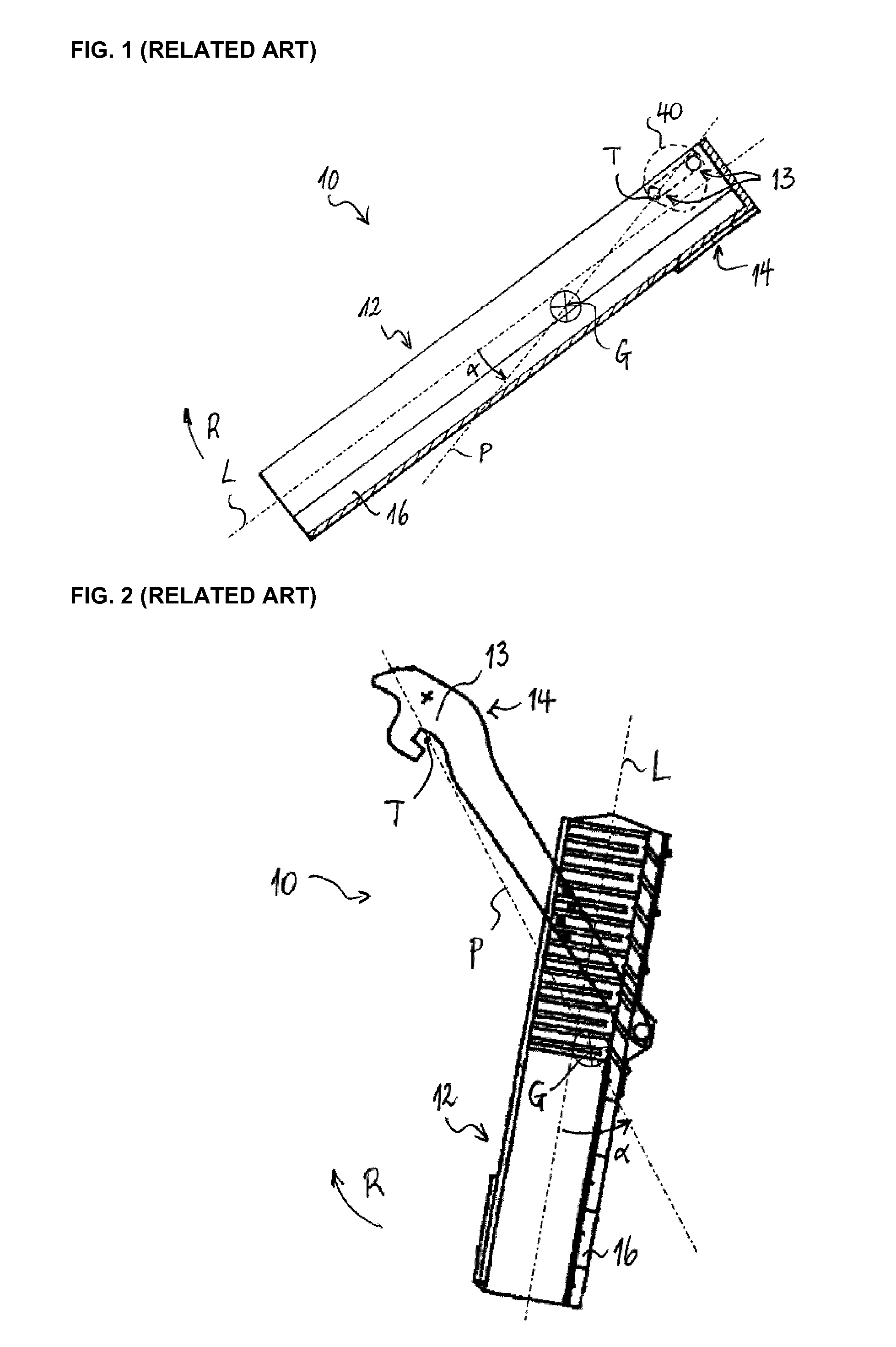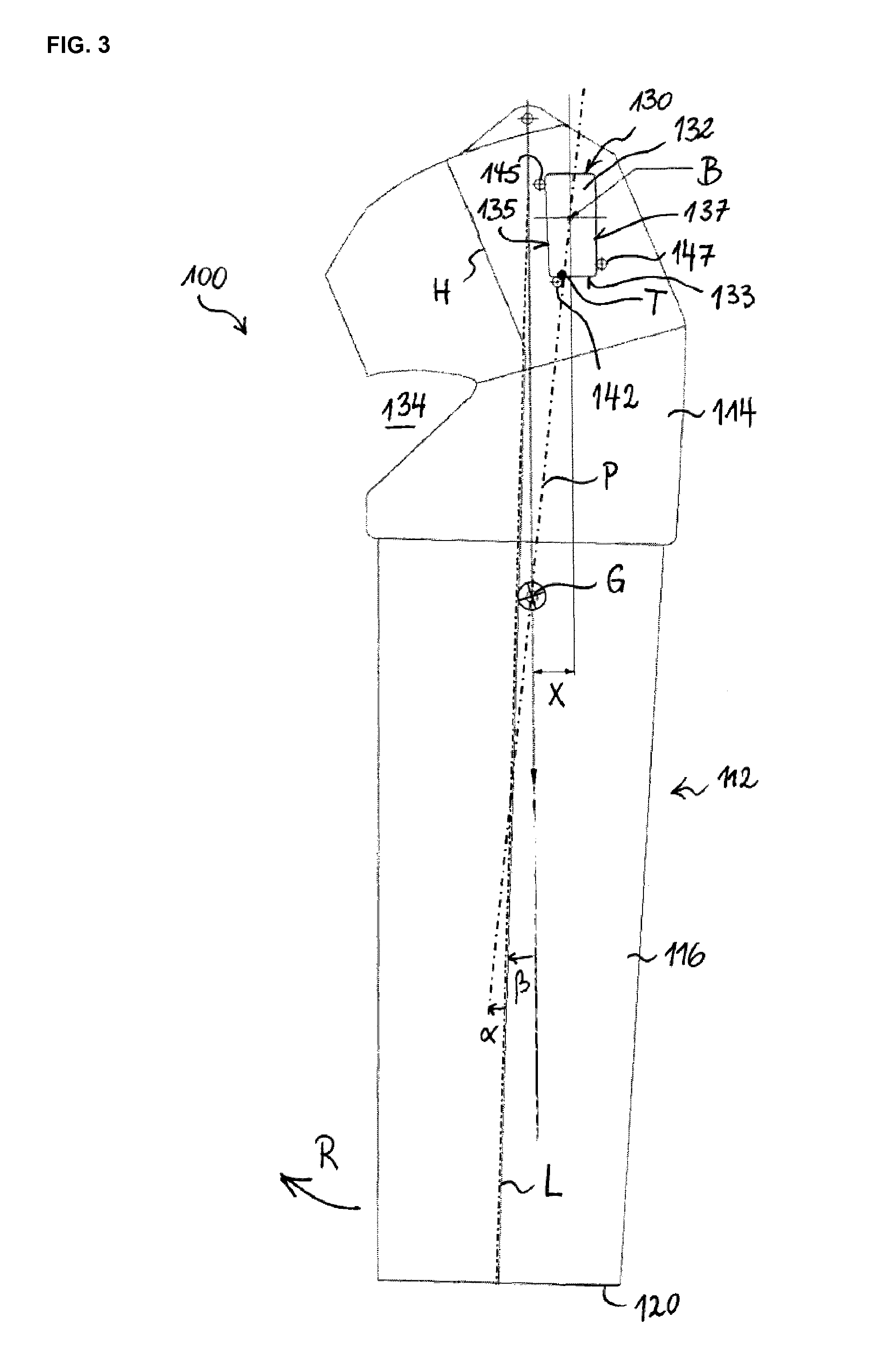Distribution chute for a charging device
a charging device and discharging chute technology, which is applied in the direction of charging devices, charge manipulation, lighting and heating apparatus, etc., can solve the problems of affecting the operation of the charging device, and requiring a rather complex mounting and dismounting procedure, so as to avoid significant torque reversal and facilitate the mounting and dismounting of the chute
- Summary
- Abstract
- Description
- Claims
- Application Information
AI Technical Summary
Benefits of technology
Problems solved by technology
Method used
Image
Examples
first embodiment
[0052]a chute 100 shown in FIG. 3 has a chute body 112 with an upstream mounting head 114. The chute body 112 has an elongated downstream chute portion 116 that extends along a longitudinal axis L. During operation, the chute portion116 provides a sliding surface, on which charge material slides to a downstream outlet 120 from which charge material (such as e.g. coke, ore, pellets, sinter etc.) leaves the chute body 112. The downstream chute portion 116 as such is of conical or cylindrical tubular construction, preferably with a fully closed outer shell in circumferential direction about axis L.
[0053]FIG. 3 shows the chute 100 in its actual replacement position. The chute 100 is designed so that in this position, the longitudinal axis L of the main chute portion 116 is at a small angle β to the vertical. The angle β has comparatively small angular measure in the raising sense R, i.e. in the range 0°≦β≦+5°, for example β=1.5−2.5°. The exchange position is not absolutely, but neverthe...
second embodiment
[0063]FIG. 4 shows the upstream region of a chute 200 concerning which only main differences with respect to the previous embodiment will be detailed. Identical or functionally identical features are provided with reference signs having an incremented hundreds digit in FIG. 4. As a noteworthy difference, the acute angle α of FIG. 4 is slightly negative, i.e. satisfies, 0°>α≧−5° (the positive sense of angles being the raising sense R). Accordingly, a torque reversal does occur, but due to the small absolute value of α reversal does not occur during normal operation. The chute is designed so that reversal occurs only when the chute 200 is pivoted to its exchange position, just before reaching the position illustrated in FIG. 4. Accordingly, a self unblocking function is achieved with this design, whereas the chute 100 can still be easily exchanged, because the suspension is also designed as “free suspension” i.e. permits tilting in the raising sense R (unless a safety pin is engaged)....
third embodiment
[0065]FIG. 5 illustrates a distribution chute 300. Again only main differences will be described because the chute 300 is very similar in design to the chute of FIG. 3 especially as concerns the position of the suspensions 330 placed closer to the bottom of the chute body 316, namely by distance X compared to a typical central suspension coinciding with the pivoting axis.
[0066]The chute 300 has a suspension 330 formed of a single coherent protrusion 322 that is of trapezoidal shape tapering towards the outlet of the chute 300 and symmetrical about its longitudinal axis. This shape provides a self-positioning function during the final stage of mounting the chute 300 to the support flanges. In consequence, as another benefit, the corresponding support flanges (not shown) have two lower protrusions 343, 345 that carry the weight of the chute by engaging the lateral surfaces 335, 337 at the tip of the trapezoidal protrusion 332. A torque resisting function is also assumed by one of thes...
PUM
| Property | Measurement | Unit |
|---|---|---|
| angle | aaaaa | aaaaa |
| bend angle | aaaaa | aaaaa |
| angle | aaaaa | aaaaa |
Abstract
Description
Claims
Application Information
 Login to View More
Login to View More - R&D
- Intellectual Property
- Life Sciences
- Materials
- Tech Scout
- Unparalleled Data Quality
- Higher Quality Content
- 60% Fewer Hallucinations
Browse by: Latest US Patents, China's latest patents, Technical Efficacy Thesaurus, Application Domain, Technology Topic, Popular Technical Reports.
© 2025 PatSnap. All rights reserved.Legal|Privacy policy|Modern Slavery Act Transparency Statement|Sitemap|About US| Contact US: help@patsnap.com



